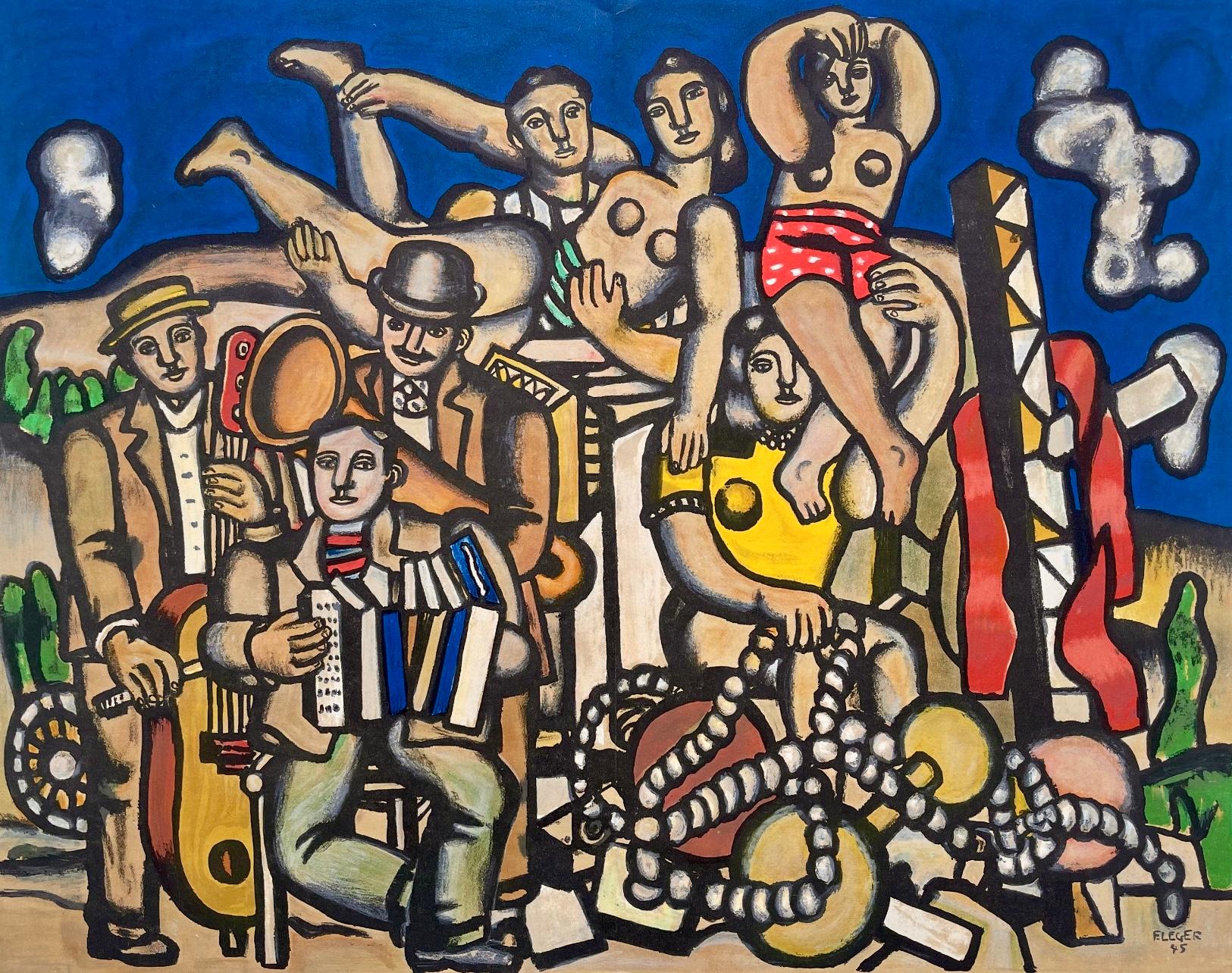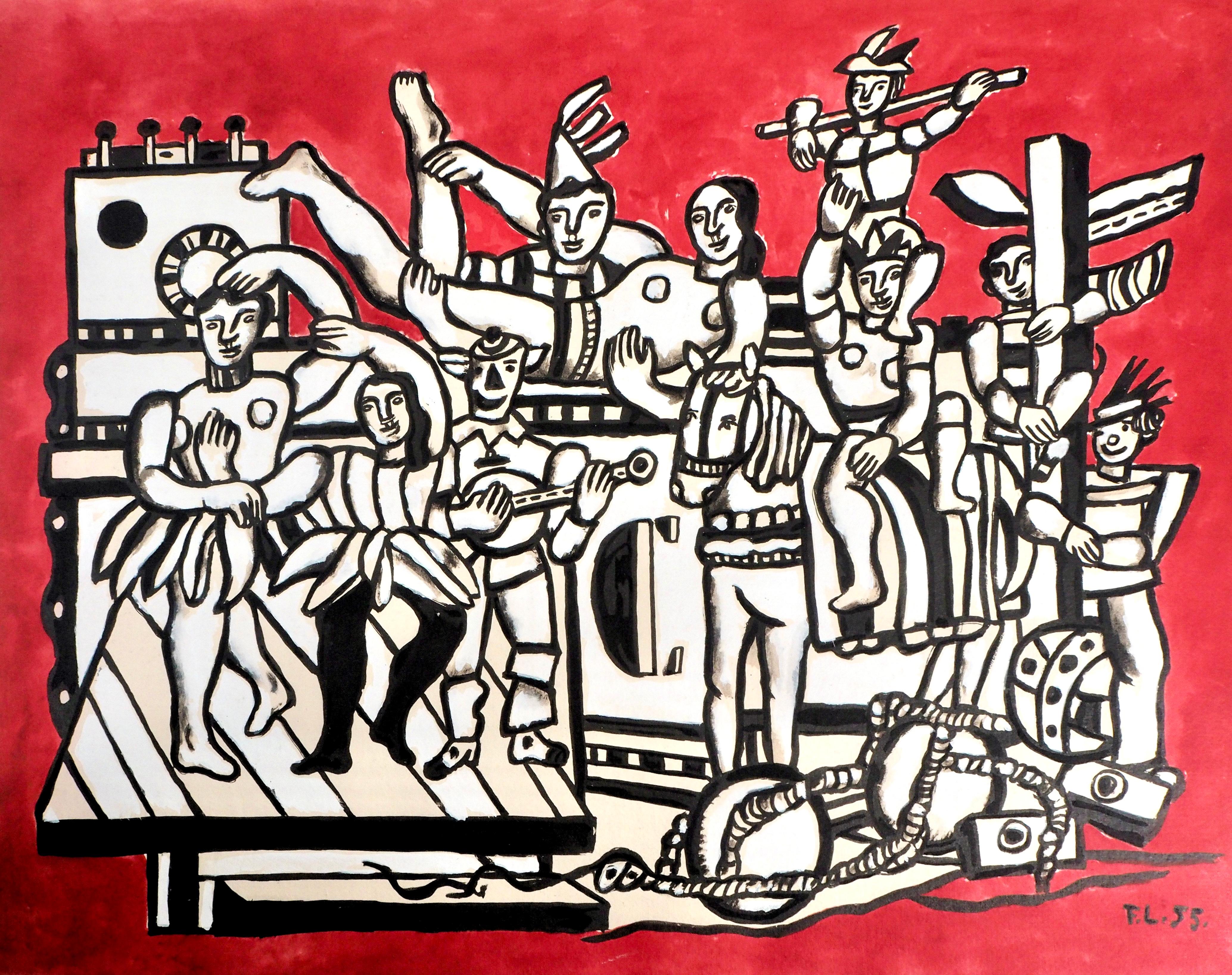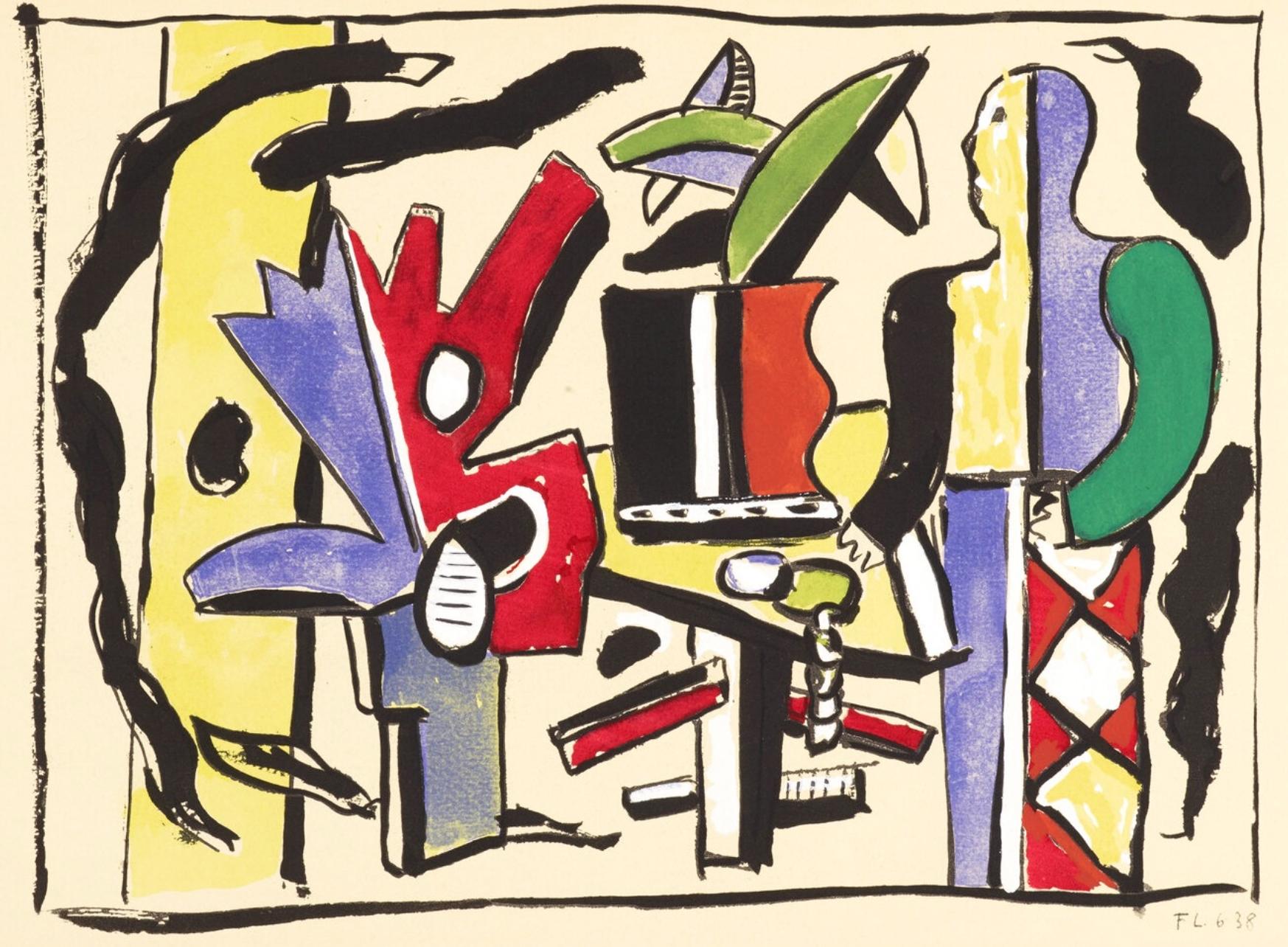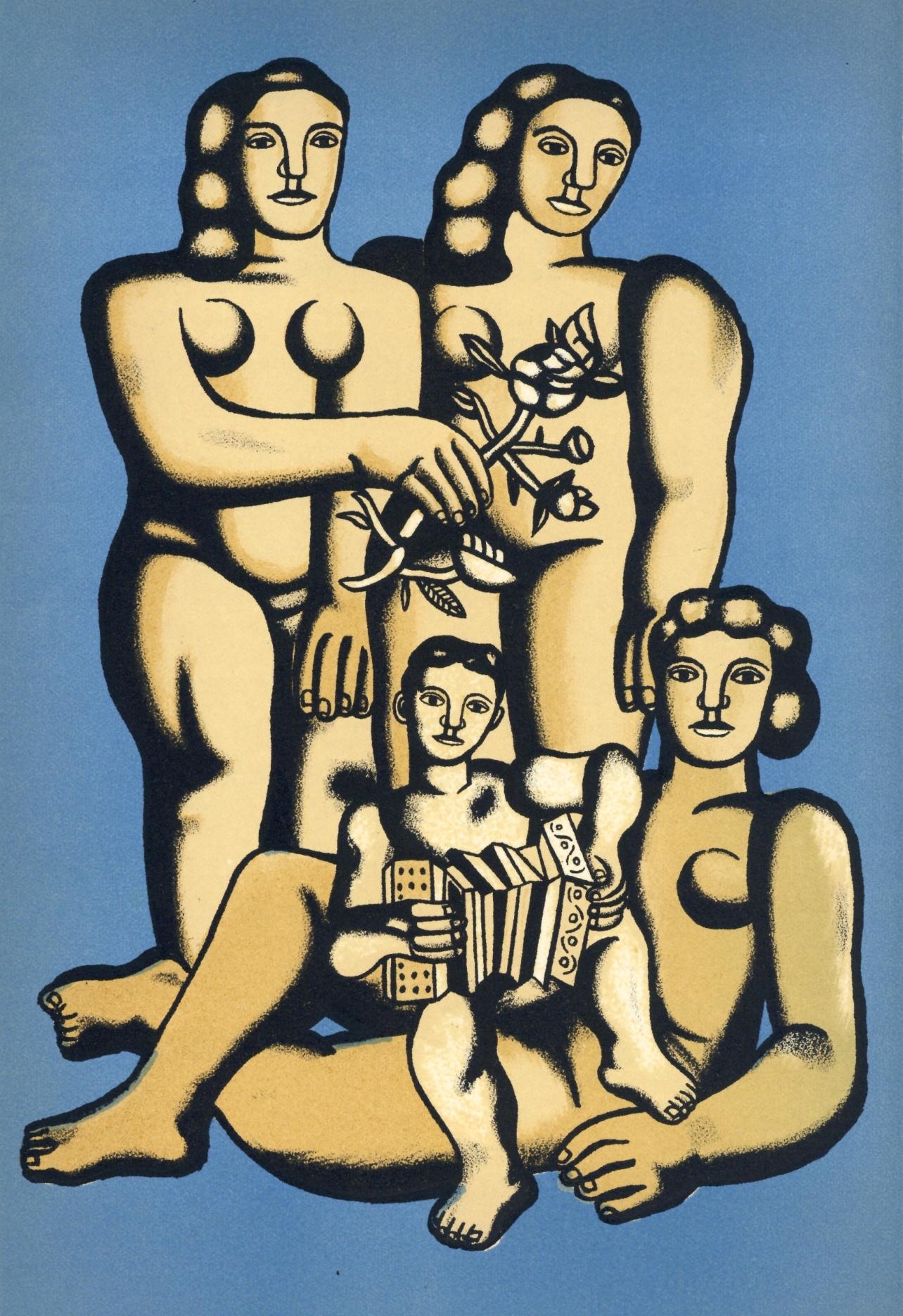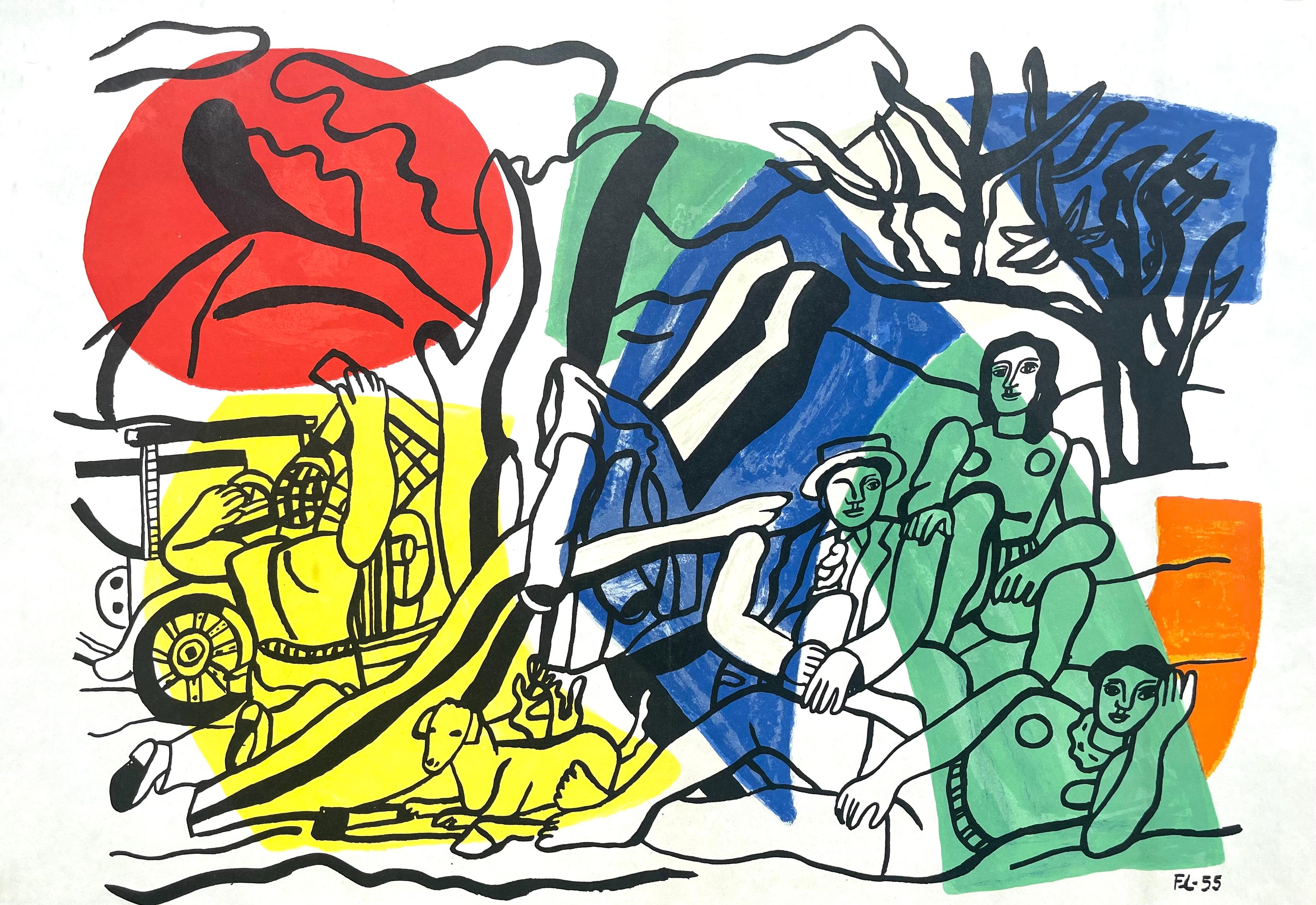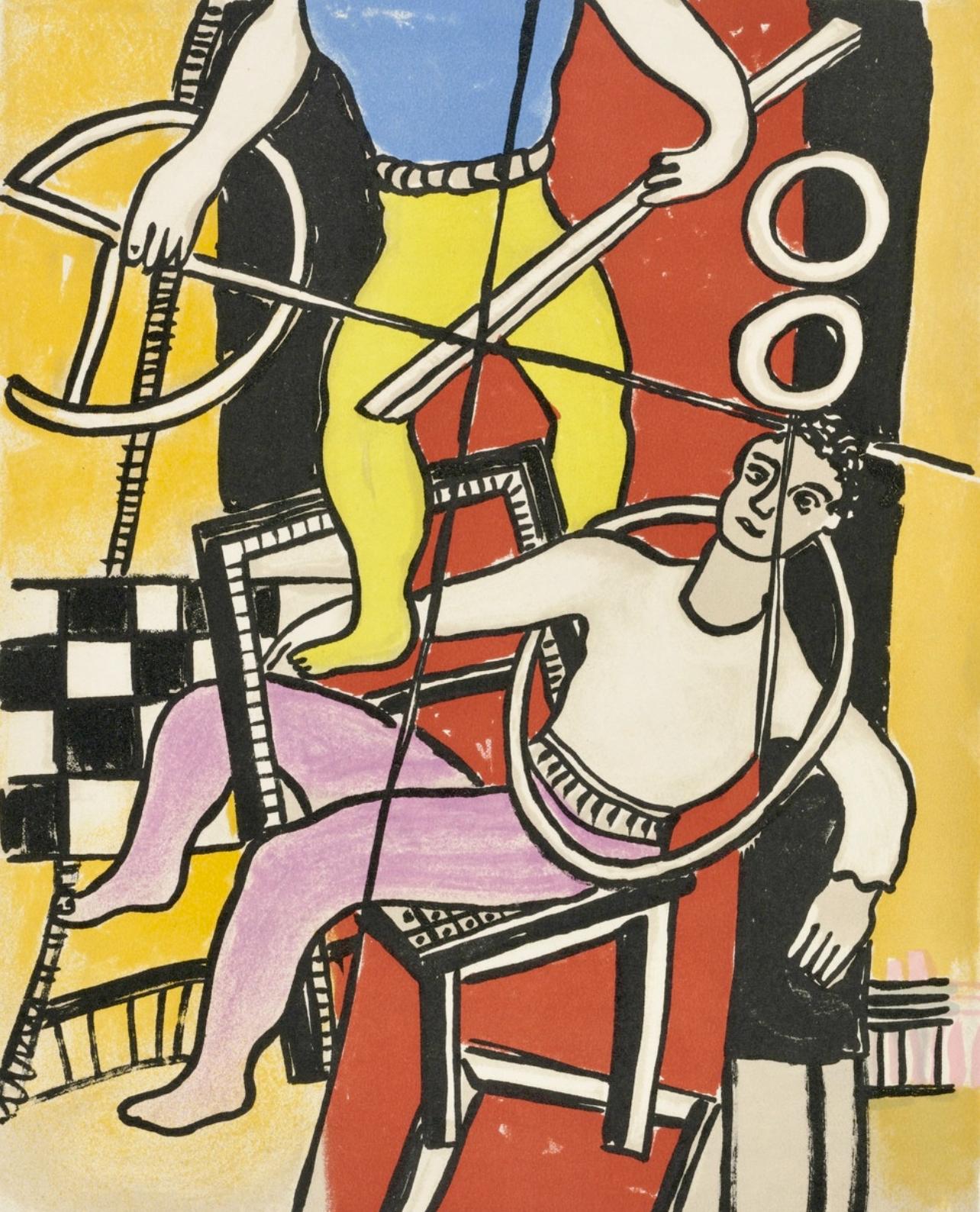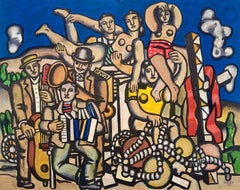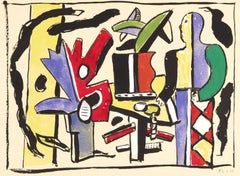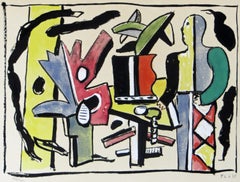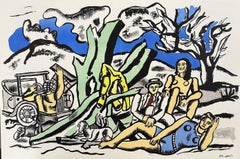Items Similar to Léger, Acrobates et musiciens (Saphire 270), Derrière le miroir (after)
Want more images or videos?
Request additional images or videos from the seller
1 of 11
Léger, Acrobates et musiciens (Saphire 270), Derrière le miroir (after)1960
1960
$796
$99520% Off
£596.09
£745.1120% Off
€687.35
€859.1920% Off
CA$1,118.81
CA$1,398.5220% Off
A$1,222.30
A$1,527.8820% Off
CHF 641.22
CHF 801.5220% Off
MX$14,870.79
MX$18,588.4920% Off
NOK 7,976.99
NOK 9,971.2420% Off
SEK 7,552.87
SEK 9,441.0820% Off
DKK 5,131.19
DKK 6,413.9920% Off
About the Item
Lithograph on vélin paper. Paper Size: 15 x 22 inches, with centerfold, as issued. Inscription: Signed in the plate and unnumbered, as issued. Catalogue raisonné references: Léger, Fernand, and Lawrence Saphire. Fernand Léger: The Complete Graphic Work. Blue Moon Press, 1978, illustration 270. Notes: From the folio, Derrière le miroir, Poètes, peintres, sculpteurs, N° 119, 1960. Published by Aimé Maeght, Éditeur, Paris; printed by Mourlot Frères, Paris, 1960. Additional notes: Excerpted from a Christie’s, New York lot essay, The life span of Derrière le Miroir was thirty-five years. Publication began in 1946. Aimé Maeght, initiator of Derrière le Miroir, had already made few attempts to start publications illustrated with fine printed lithographs in colours in the years prior to the launch of Derrière le Miroir. The name, Derrière le Miroir was suggested by Jacques Kober, manager of Galerie Maeght. The gallery had opened in 1945; the first number of Derrière le Miroir was released a year later. For this first issue Geer van Velde was invited to create lithographs to illustrate the publication. The lithographs in the first issue was printed by Mourlot, Paris. The first three issues of Derrière le Miroir were unsuccessful for Maeght as far as the edition size—the initial print-runs were far too large. From 30,000 for the first issue, the number was taken down to 10,000 for numbers two and three, until Derrière le Miroir number four was published in an edition of 1500. Maeght instituted a policy whereby unsold issues were recycled and used for the fabrication of new paper for the coming editions—this served to both conserve resources and also usually result in ultimate edition sizes far less than 1,500. With number four, the permanent format for Derrière le Miroir was established. Lithographs in colours were key; text was limited to comments on the featuring artist's exhibition taking place in the Galerie Maeght, and this catalogue format was defining to Derrière le Miroir. Galerie Maeght took on the leading role in Paris and presented all main artists including Braque, Matisse, Chagall, Léger, Bonnard, Chillida and many more. So too did Derrière le Miroir. The idea of a magazine was meanwhile still on the mind of Aimé Maeght. He found an insert as a solution. Two, and later four, pages of art review were inserted from 1952 onwards. In 1968 this find had ripened to independency and the dream of Aimé Maeght was now a tangible fact named l'Art vivant. Derrière le Miroir was on it's own again. Over 250 issues in a row. At that point publisher Aimé Maeght wished to make a mark with the publication of an hommage to all who once contributed to the magazine which came in the form of issue number 250, but was delayed by the death of Aimé Maeght. It was published after number 253 in 1982 and became a tribute to Aimé and Marguérite Maeght and 35 years of friendship with artists and poets. The era of Derrière le Miroir was closed with that final publication.
FERNAND LEGER (1881-1955) was a French painter, sculptor, and filmmaker. In his early works he created a personal form of cubism (known as "tubism") which he gradually modified into a more figurative, populist style. His boldly simplified treatment of modern subject matter has caused him to be regarded as a forerunner of pop art. Léger was born in Argentan, Orne, Lower Normandy, where his father raised cattle. Fernand Léger initially trained as an architect from 1897 to 1899, before moving in 1900 to Paris, where he supported himself as an architectural draftsman. After military service in Versailles, Yvelines, in 1902–1903, he enrolled at the School of Decorative Arts after his application to the École des Beaux-Arts was rejected. He nevertheless attended the Beaux-Arts as a non-enrolled student, spending what he described as "three empty and useless years" studying with Gérôme and others, while also studying at the Académie Julian. He began to work seriously as a painter only at the age of 25. At this point his work showed the influence of impressionism, as seen in Le Jardin de ma mère (My Mother's Garden) of 1905, one of the few paintings from this period that he did not later destroy. A new emphasis on drawing and geometry appeared in Léger's work after he saw the Cézanne retrospective at the Salon d'Automne in 1907. In 1909, he moved to Montparnasse and met Alexander Archipenko, Jacques Lipchitz, Marc Chagall, Joseph Csaky and Robert Delaunay. In 1910, he exhibited at the Salon d'Automne in the same room (salle VIII) as Jean Metzinger and Henri Le Fauconnier. In his major painting of this period, Nudes in the Forest, Léger displays a personal form of Cubism that his critics termed "Tubism" for its emphasis on cylindrical forms. In 1911, the hanging committee of the Salon des Indépendants placed together the painters identified as 'Cubists'. Metzinger, Albert Gleizes, Le Fauconnier, Delaunay and Léger were responsible for revealing Cubism to the general public for the first time as an organized group. The following year he again exhibited at the Salon d'Automne and Indépendants with the Cubists, and joined with several artists, including Le Fauconnier, Metzinger, Gleizes, Francis Picabia and the Duchamp brothers, Jacques Villon, Raymond Duchamp-Villon and Marcel Duchamp to form the Puteaux Group—also called the Section d'Or (The Golden Section) paintings, from then until 1914, became increasingly abstract. Their tubular, conical, and cubed forms are laconically rendered in rough patches of primary colors plus green, black and white, as seen in the series of paintings with the title Contrasting Forms. Léger made no use of the collage technique pioneered by Braque and Picasso. Fernand Léger's highest auction price is $70,062,496 USD for his painting Contraste de formes, set in 2017 at Christie's New York.
- Creation Year:1960
- Dimensions:Height: 15 in (38.1 cm)Width: 22 in (55.88 cm)
- Medium:
- Movement & Style:
- After:Fernand Léger (1881-1955, French)
- Period:
- Condition:
- Gallery Location:Southampton, NY
- Reference Number:1stDibs: LU1465216454712
About the Seller
4.9
Platinum Seller
Premium sellers with a 4.7+ rating and 24-hour response times
Established in 1978
1stDibs seller since 2021
1,189 sales on 1stDibs
Typical response time: <1 hour
- ShippingRetrieving quote...Shipping from: Southampton, NY
- Return Policy
Authenticity Guarantee
In the unlikely event there’s an issue with an item’s authenticity, contact us within 1 year for a full refund. DetailsMoney-Back Guarantee
If your item is not as described, is damaged in transit, or does not arrive, contact us within 7 days for a full refund. Details24-Hour Cancellation
You have a 24-hour grace period in which to reconsider your purchase, with no questions asked.Vetted Professional Sellers
Our world-class sellers must adhere to strict standards for service and quality, maintaining the integrity of our listings.Price-Match Guarantee
If you find that a seller listed the same item for a lower price elsewhere, we’ll match it.Trusted Global Delivery
Our best-in-class carrier network provides specialized shipping options worldwide, including custom delivery.More From This Seller
View AllLéger, Composition, Derrière le miroir (after)
By Fernand Léger
Located in Southampton, NY
Lithograph on vélin paper. Inscription: Unsigned and unnumbered, as issued. Good condition. Notes: From Derrière le miroir, N° 119, 1960. Published by Aimé Maeght, Éditeur, Paris; pr...
Category
1960s Modern Abstract Prints
Materials
Lithograph
Léger, Composition, Contrastes (after)
By Fernand Léger
Located in Southampton, NY
Lithograph and stencil on papier a la cuve du moulin Richard de Bas spécialement filigrané pour cette édition paper. Inscription: signed in the plate and unnumbered, as issued. Good ...
Category
1950s Modern Figurative Prints
Materials
Lithograph, Stencil
Léger, Composition, Douze Contemporains (after)
By Fernand Léger
Located in Southampton, NY
Lithograph, stencil on wove paper. Inscription: Unsigned and unnumbered. Good condition. Notes: From the folio, Douze Contemporains, 1959; published by Éditions d'Art du Lion, Paris;...
Category
1950s Modern Abstract Prints
Materials
Lithograph, Stencil
Léger, Composition, Mon ami Léger (after)
By Fernand Léger
Located in Southampton, NY
Lithograph and stencil on vélin d'Arches paper. Inscription: Unsigned and unnumbered, as issued. Good condition. Notes: From the album, Mon ami Léger par André Maurois de l'Académie ...
Category
1950s Modern Still-life Prints
Materials
Lithograph, Stencil
Léger, La partie de campagne, Derrière le miroir (after)
By Fernand Léger
Located in Southampton, NY
Lithograph on vélin paper. Inscription: Unsigned and unnumbered, as issued. Good condition, with centerfold, as issued. Notes: From Derrière le miroir, N° 121-122, 1960. Published by...
Category
1960s Modern Abstract Prints
Materials
Lithograph
Composition, Cirque (Saphire, N° 44-106)
By Fernand Léger
Located in Southampton, NY
Lithograph on vélin d’Arches paper. Inscription: Unsigned and unnumbered, as issued. Good condition. Notes: From the folio, Cirque, Lithographies Originales. Published by Les Édition...
Category
1950s Modern Landscape Prints
Materials
Lithograph
You May Also Like
L'Artiste dans le Studio from Douze Contemporains
By (after) Fernand Léger
Located in San Francisco, CA
Artist: Fernand Leger (after)
Title: L'Artiste dans le Studio from Douze Contemporains
Year: 1959 Original: 1938
Medium: Lithograph with Pochoir on Wove paper, signed and dated in t...
Category
1950s Abstract Figurative Prints
Materials
Lithograph
Fernand Léger, The Outing (La Partie de Campagne)
By Fernand Léger
Located in Chatsworth, CA
Fernand Léger
The Outing (La Partie de Campagne)
Medium: Original lithograph
Date: 1952
Sheet Size: 14" x 21"
Signature: Initialed and dated in the stone
Reference: Verve
Category
1950s Modern Figurative Prints
Materials
Lithograph
The Outing (La Partie de Campagne) (Verve)
By Fernand Léger
Located in Washington, DC
Artist: Fernand Leger
Title: The Outing (La Partie de Campagne) (Verve)
Medium: Original lithograph
Date: 1952
Edition: Unnumbered
Sheet Size: 14" x...
Category
1950s Figurative Prints
Materials
Lithograph
La Partie de Campagne
By Fernand Léger
Located in OPOLE, PL
Fernand Léger (1881-1955) - La Partie de Campagne
Lithograph from 1952.
Dimensions of work: 52 x 35 cm
Publisher: Tériade, Paris.
On the verso another Lithographs in black.
The ...
Category
1950s Surrealist More Prints
Materials
Lithograph
French Modern Art by Fernand Léger - Untitled
By Fernand Léger
Located in Paris, IDF
Lithography on paper printed in 40's, numbered 42/300, 54,5 x 75,5 x 0,1 cm - 21,4 x 29,7 x 0,04 in, printed by Moulot Editions Editions with the stamp Fernand Léger on Musee Biot pa...
Category
1940s Cubist Abstract Prints
Materials
Paper, Lithograph
Fernand Leger-Le Jeu (The Game)
By Fernand Léger
Located in Brooklyn, NY
This reproduction lithograph, titled Le Jeu by Fernand Léger, is a beautifully crafted piece printed on high-quality ARCHES paper. Originally created in 1948, this lithograph capture...
Category
20th Century Modern Prints and Multiples
Materials
Lithograph
$400 Sale Price
20% Off
More Ways To Browse
Cowboy Etching
Cyrus Leroy Baldridge
Dali Alice Adventures
Dali Archangel
Dali Curie
Dali Demons
Dali Divine Comedy Woodcuts
Dali Immaculate Conception
Dali King David
Dali Litho
Dali Lithograph Cosmos
Dali Lobster
Dali Logician Devil
Dali Marguerite
Dali Obsession Of The Heart
Dali Playing Cards
Dali Purgatory 4
Dali Shakespeare
